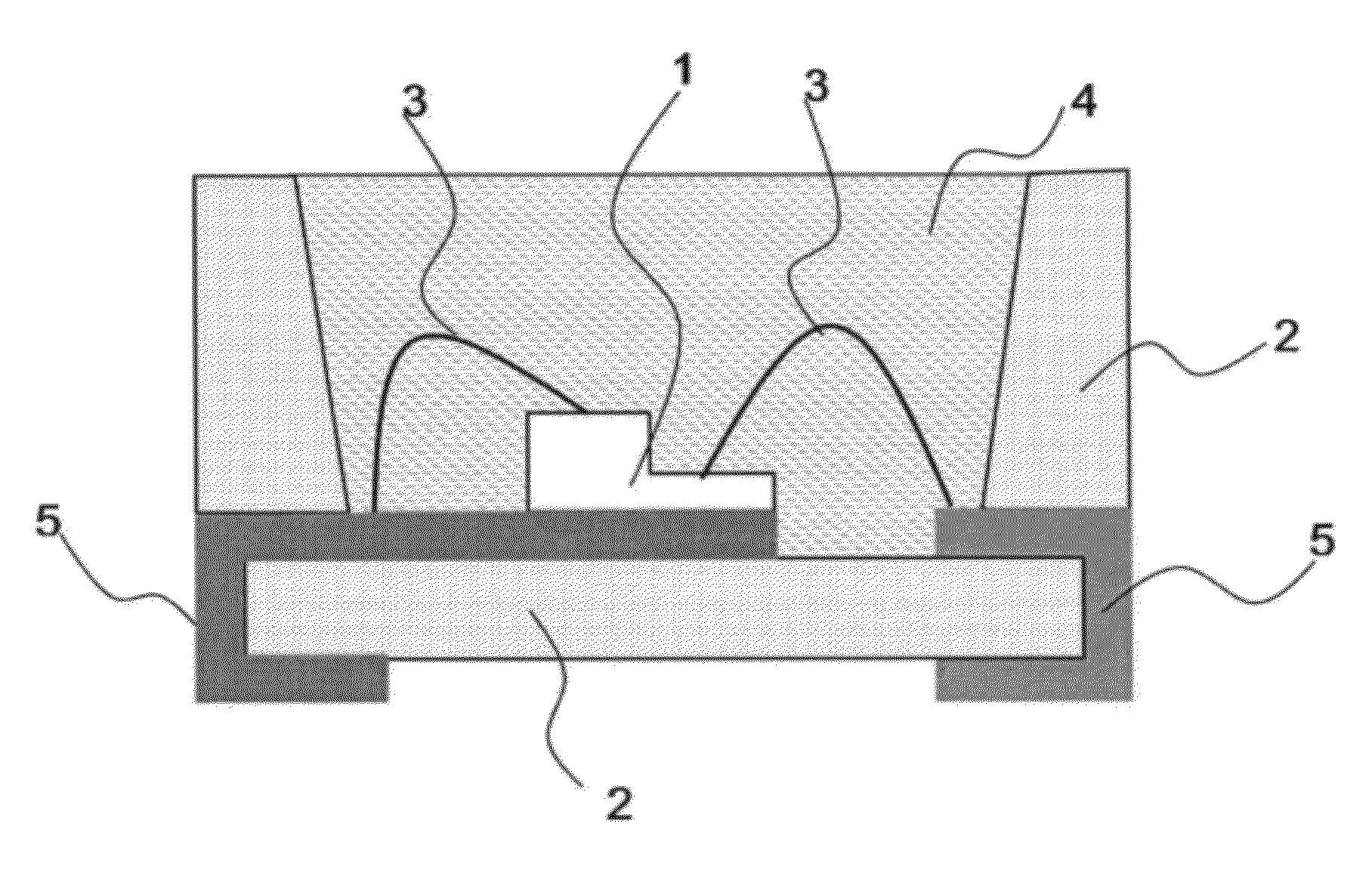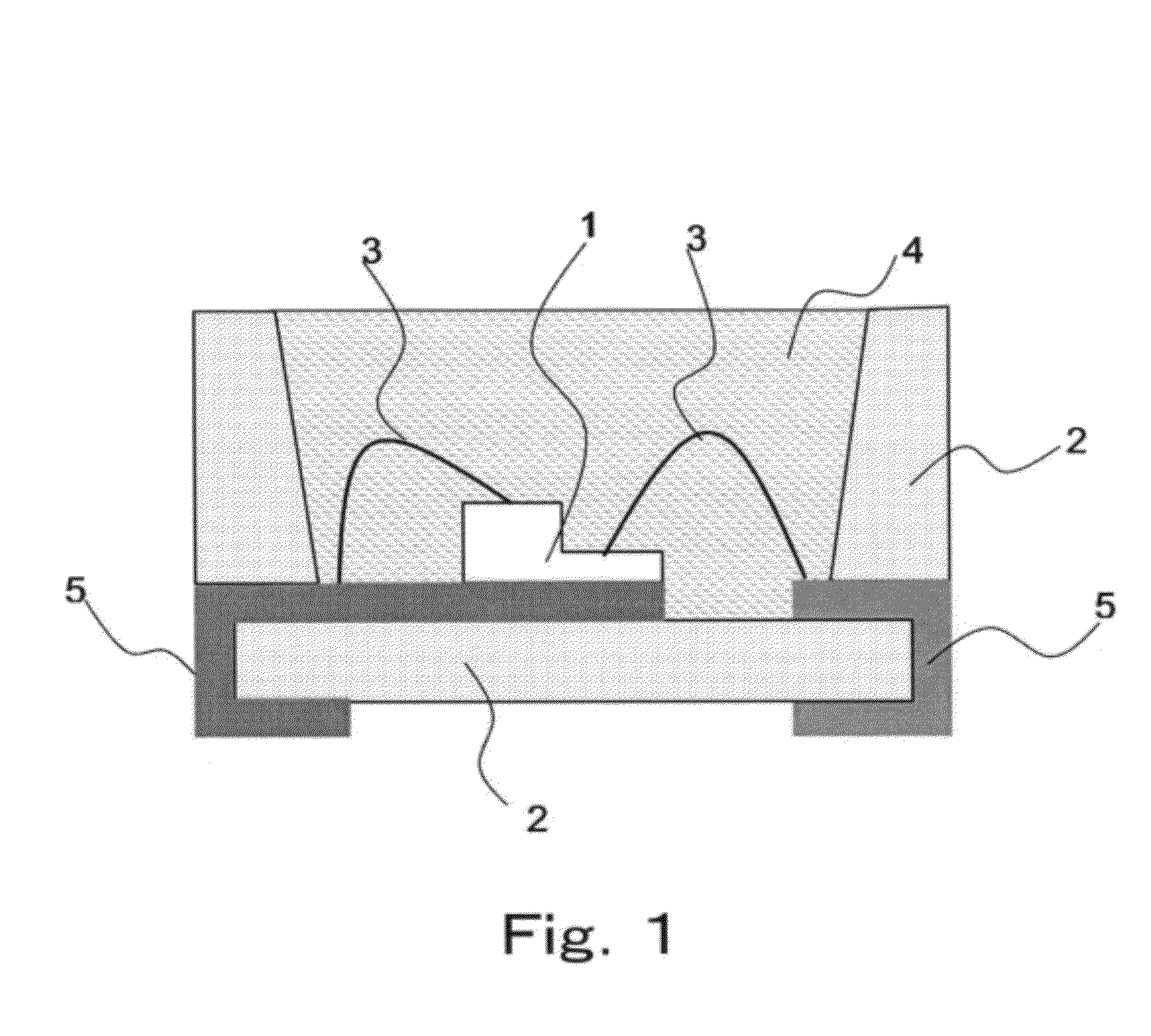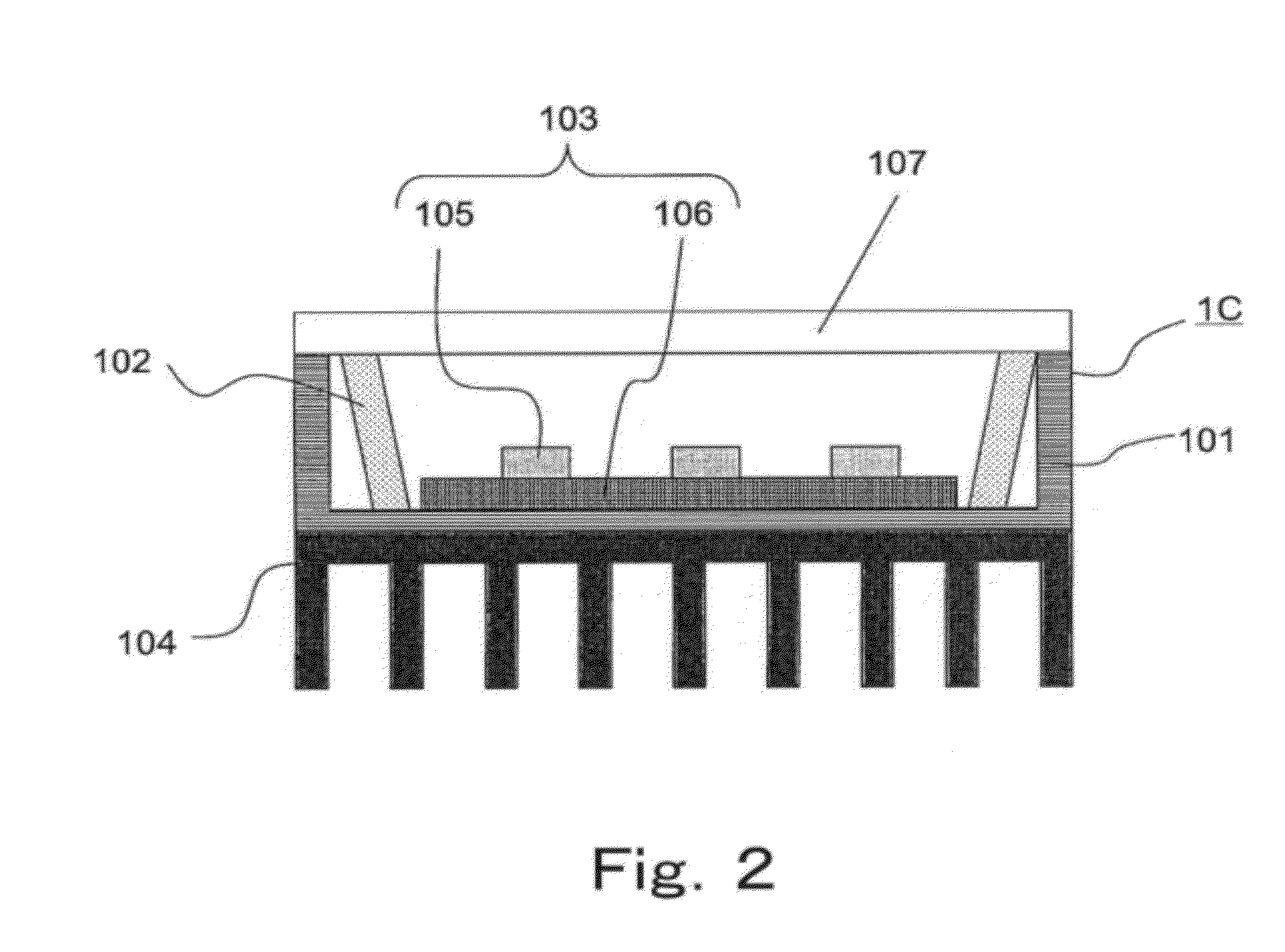Material for a molded resin for use in a semiconductor light-emitting device
a technology of light-emitting devices and molded resins, which is applied in the direction of lighting and heating apparatus, camera filters, instruments, etc., can solve the problems of reduced light-emitting efficiency of semiconductor light-emitting devices, inability to meet the requirements of lighting, so as to achieve strong light resistance, improve led output, and high durability
- Summary
- Abstract
- Description
- Claims
- Application Information
AI Technical Summary
Benefits of technology
Problems solved by technology
Method used
Image
Examples
example 1
Synthesis of Polyorganosiloxane (1)
[0232]A vinyl group-containing polydimethylsiloxane (vinyl group content: 1.2 mmol / g, viscosity adjusted to 1000 mPa·s by the addition of finely divided silica particles, contained 6.8 ppm of a platinum complex catalyst) and a hydrosilyl group-containing polydimethylsiloxane (vinyl group content: 0.3 mmol / g, hydrosilyl group content: 1.8 mmol / g, viscosity adjusted to 2100 mPa·s by the addition of finely divided silica particles) were mixed at 1:1 to obtain a liquid heat-curable polyorganosiloxane (1) having a viscosity of 1500 mPa·s and a platinum concentration of 3.4 ppm.
[0233]The finely divided silica particles corresponded to the fluidity controlling agent (E) and were added at a polyorganosiloxane: finely divided silica particle (weight ratio) of from 80:20 to 89.5:10.5 to provide the viscosities indicated above.
Synthesis of Polyorganosiloxane (2)
[0234]A vinyl group-containing polydimethylsiloxane (vinyl group content: 0.3 mmol / g, viscosity: 35...
example 10
[0254]A package for a semiconductor light-emitting device was molded by liquid injection molding using the material of Example 3 in combination with a copper lead frame that had been silver plated over its entire surface. This package was a cup-shaped surface-mount package with the resin portion having length 3.2 mm×width 2.7 mm×height 1.4 mm and a concave portion with a diameter of 2.4 mm for the opening. Molding was performed for a curing time of 20 seconds at a mold temperature of 170° C. Observation of the molded package showed the package to be free of flash and free of short molding.
example 11
[0255]A package for a semiconductor light-emitting device was molded by liquid injection molding using the material of Example 3 in combination with a copper lead frame that had been silver plated over its entire surface. This package was a cup-shaped surface-mount package having length 5 mm×width 5 mm×height 1.5 mm and a concave portion with a diameter of 3.6 mm for the opening. Molding was performed for a curing time of 180 seconds with a 150° C. mold. The molded package was sectioned with a microtome while frozen with liquid nitrogen and the package cross section was observed by SEM. The primary particle diameter of the alumina exposed in the cross section was 0.3 μm and the primary particle aspect ratio was 1.42.
PUM
| Property | Measurement | Unit |
|---|---|---|
| median diameter | aaaaa | aaaaa |
| median diameter | aaaaa | aaaaa |
| viscosity | aaaaa | aaaaa |
Abstract
Description
Claims
Application Information
 Login to View More
Login to View More - R&D
- Intellectual Property
- Life Sciences
- Materials
- Tech Scout
- Unparalleled Data Quality
- Higher Quality Content
- 60% Fewer Hallucinations
Browse by: Latest US Patents, China's latest patents, Technical Efficacy Thesaurus, Application Domain, Technology Topic, Popular Technical Reports.
© 2025 PatSnap. All rights reserved.Legal|Privacy policy|Modern Slavery Act Transparency Statement|Sitemap|About US| Contact US: help@patsnap.com



